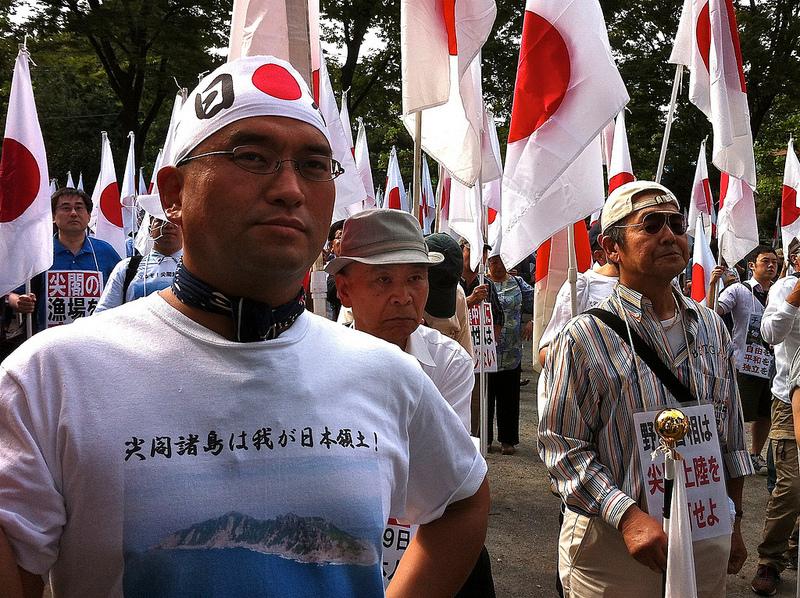
The Australian debate on the Senkaku/Diaoyu dispute is interesting for what it reveals, and what it omits. So far, very few are talking about Australia’s diplomatic strategy—and that’s a big problem. While the best strategy will probably involve elements of military balancing, it’s worth examining Australia’s potential diplomatic role in the peaceful de-escalation of Japan–China tensions.
Australian foreign policy, under Bob Carr, has been prudently non-committal on this dispute. That’s a smart approach, but prudence and even-handedness don’t equate a diplomatic strategy. Australia has some diplomatic leverage in the current crisis, in part thanks to its status as a new member of the UN Security Council and future G20 host. And we have good reason to take a keen interest.
It matters very little to the direct Australian national interest who owns a pile of rocks in the East China Sea. What matters is that Japan and China don’t go to war over them and risk Asia’s (and hence our) security and prosperity in the process. We can’t afford to be so complacent on this crisis as to assume that major war, involving Australian lives, could not result from it.
Under a reasonable reading of ANZUS and the San Francisco Peace Treaty, Australia has no alliance obligations to involve itself, should war break out and the US come to the aid of Japan. The United States, however, might have some expectations about Australia’s involvement under a strict reading of both texts, and this is something for us to consider very seriously.
For the above reason, it’s important to emphasise that Australia cannot aim to directly mediate this dispute. In short, it’s not seen as a neutral player by both parties. And we are not, as far as China is concerned. According to numerous sources, since the deal with the US on basing Marines in Darwin, China basically perceives Australia as part of a strategy to contain its rise.
The following points suggest key elements of the Australian contribution to a broader diplomatic game plan to prevent Japan–China war. (See my six-point plan to prevent Senkaku war). Australia should pursue a two-pronged strategy—with two short-term and two long-term objectives.
Our first short-term goal in this dispute should focus on directly restraining both parties. In practice, Australia can begin by proposing an immediate naval and aerial standoff, in which both Japan and China ceased incursions around and over the contested islands for one month of high-level talks. Submarines should fall under this understanding, as their presence could destabilise peace talks.
Secondly, by virtue of our seat on the UNSC, Australia might be able to increase pressure on both parties to accept Ban-ki Moon’s recommendations. To this end, we could support the Secretary General in referring this dispute to the Security Council, under Article 99 of the UN Charter. It’s obvious that China would try to block this from reaching the agenda, and this could spark a damaging public debate at the UN. This is a fairly blunt instrument, so Australia should only seek to use it if Ban-ki Moon requested the extra pressure.
Clearly, the above two are only short-term measures to encourage de-escalation. Even if successful, they will only buy time for calmer and more in-depth talks to seek to resolve the core issues.
As a first long-term objective, Australia should encourage Japan and China to conclude military-to-military and civilian confidence-building measures (CBMs) covering their interactions at sea. Mark Valencia offers two basic formats—either a US–Soviet style Incidents at Sea Agreement (INCSEA) along the lines of what Sam Bateman has previously discussed on this blog, or a Declaration on Conduct, similar to that concluded by ASEAN and China in the South China Sea.
I favour the first agreement. The ASEAN–China declaration was more aspirational, but its failure was evident in the past few years of skirmishes in the South China Sea. An INCSEA agreement’s concrete measures of mutual restraint—such as ‘not simulating attacks at, launching objects toward, or illuminating the bridges of the other party’s ships’—are more relevant to this crisis.
Australia can push both parties to conclude such an agreement in the next few months. To avoid the trappings and slow bureaucratic channels of officialdom, a major Australian think tank could perhaps present a draft INCSEA negotiating text to Japanese and Chinese negotiators in a Track II proposal.
Finally, Australia’s second long-term objective should be that Japan and China conclude the present bout of tensions with an in principle agreement to negotiate the future status of the islands. In many ways, this would vindicate China’s position that Japan recognise the disputed nature of the territories. However, Japan need not verbally recognise the territorial dispute—its very engagement in such talks would tacitly make this brave concession. Whatever their content, future talks should not ignore Taiwan, which is a legitimate and constructive claimant to the Senkaku/Diaoyu islands.
Daryl Morini is a PhD candidate at the University of Queensland and a Pacific Forum CSIS WSD-Handa Non-Resident Fellow. Image courtesy of Flickr user Al Jazeera English.